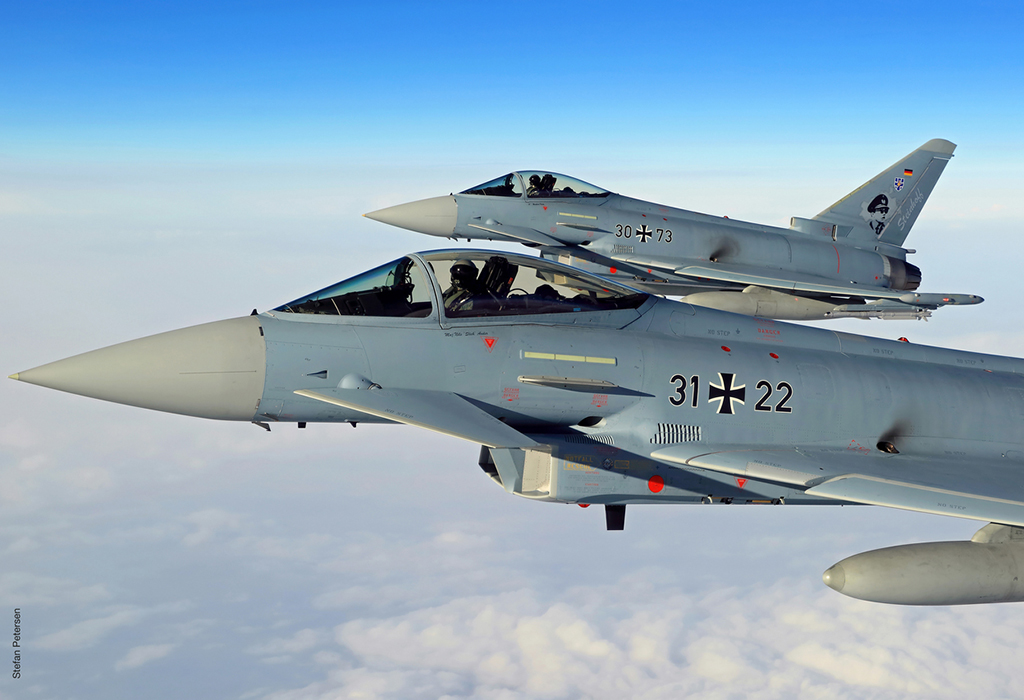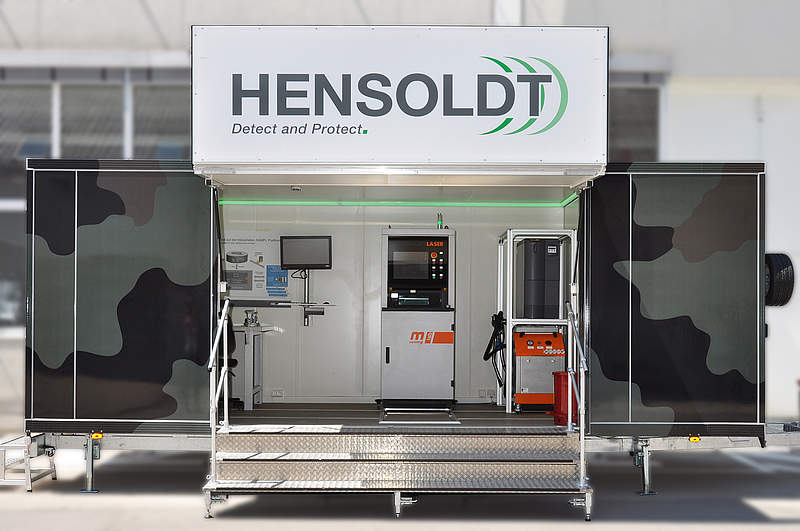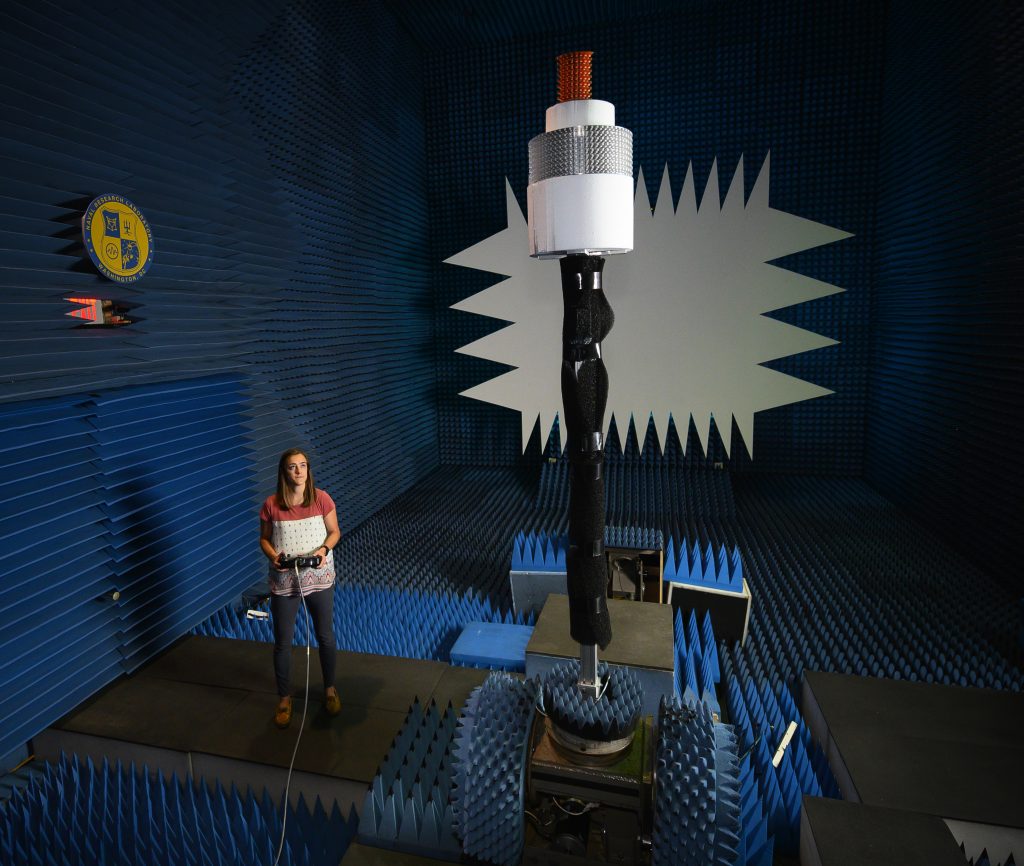Germany-based sensor specialist HENSOLDT has unveiled a new jammer that’s designed specifically to protect Western fighter jets against Russian air defense systems.
Known as ‘Kalaetron Attack,’ the system features electronics condensed via 3D printing, allowing them to be squeezed into a commonly-used pod format that’s deployable by land, air and sea. Said to be capable of blocking ‘even the latest Russian radars,’ the unit is part of the same product family as the ‘NH90,’ a system used by the German Armed Forces for air defense and intelligence-gathering.
“The products of contemporary airborne electronic warfare are available in Germany,” said Celia Pelaz, HENSOLDT’s CSO and Head of its Spectrum Dominance Division. “At HENSOLDT, we are bundling these capabilities in order to develop – if necessary, in cooperation with other companies – a solution under national sovereignty.”
“By combining the latest technologies, we have managed to optimize interference performance in a targeted manner.”

HENSOLDT’s air defense portfolio
With more than 6,400 employees and a reported 2021 turnover of €1.5 billion, HENSOLDT is one of the biggest players in the European defense industry. The firm mainly specializes in the development of sensor electronics and optronics capable of meeting the security needs of its military clientele, but it also offers a variety of products and services with land, air, sea, space and cyber-related applications.
On the air defense front, HENSOLDT markets various advanced tracking systems, including multimodal, fire control nose radars for Eurofighter Typhoon fighters. The firm’s range extends from long to millimeter wave and short distance to long-range air surveillance systems, thus it’s able to supply customers with both civil air traffic control devices, and military ‘Identification Friend or Foe’ technologies.
In order to build out its portfolio, and develop products capable of addressing threats as they evolve, HENSOLDT says that it continues to seek out new approaches to data management, robotics and cybersecurity. However, the company has also previously backed research into the 3D printing of electronics, the results of which could well have influenced the design of the Kalaetron Attack.
Since unveiling a self-sufficient 3D printing cell in 2017, HENSOLDT has gone on to establish a fruitful partnership with Nano Dimension, which has seen the duo make multiple breakthroughs in 3D printed PCBs. The firms have also invested in the J.A.M.E.S initiative, with the aim of setting up a community, capable of fostering innovation around electronics production, integration and materials.

A timely European defense boost?
Described by HENSOLDT as a “technological leap” in electronic aircraft defense, its latest system is part of its fully-digitized ‘Kalaetron’ product range. Through the combination of AI and Active Electronically Scanning Array (AESA) technology, a setup that allows antenna arrays to beam radio waves in different directions without moving, the unit effectively protects aircraft against enemy air defenses.
At the core of the Kalaetron Attack is a digitized broadband sensor and effector, an electronically controllable jammer and a condensed cluster of electronics. It’s the latter that benefits from the use of 3D printing, in that it features a metal structure which HENSOLDT says is “only made possible” by the technology, that can be easily integrated into many existing flying platforms around the world.
Having demonstrated its efficacy in ground tests, the radar jammer is now set to be installed onboard and flown upon an aircraft this summer, in order to confirm the firm’s lab results. Already, the unit is said to have shown “outstanding” potential as means of tackling “current threat scenarios,” and given that HENSOLDT is involved in the development of the Eurofighter, it could yet be fitted to the jet.
With the ongoing war in Ukraine, the launch of the Kalaetron Attack also comes at an ideal time for those Western countries seeking out new ways to counter Russian aggression. This is particularly pressing given that Russia has begun using 3D printing to upgrade MiG-31 fighters itself, extending their service life and potentially raising their top speed, enabling them to carry its hypersonic ‘Dagger’ missile.

AM in advancing military surveillance
Additive manufacturing continues to find applications in the production of various different antennae, including those with military potential. Just last year, the US Navy Research Laboratory managed to 3D print cylindrical antenna arrays in a way that made them much lighter and unlocked new navigational use cases for them.
In the past, the US Air Force has also awarded Sciperio funding to develop 3D printed phased array antennas. The project saw the latter deploy nScrypt’s Factory in a Tool (FiT) system to manufacture custom devices for UAVs and aircraft.
Elsewhere, in civil applications, the technology has been applied by the likes of Optomec as well, to produce semiconductor interconnects that boost 5G signals. Unveiled in October 2021, the firm’s workaround involves using 3D printing as a way of integrating millimeter-wave circuits into cell signal emitters, that’s said to provide nearby users with an improved connection and fewer drop-outs.
To stay up to date with the latest 3D printing news, don’t forget to subscribe to the 3D Printing Industry newsletter or follow us on Twitter or liking our page on Facebook.
For a deeper dive into additive manufacturing, you can now subscribe to our Youtube channel, featuring discussion, debriefs, and shots of 3D printing in-action.
Are you looking for a job in the additive manufacturing industry? Visit 3D Printing Jobs for a selection of roles in the industry.
Featured image shows two German Eurofighter jets. Photo via Stefan Petersen, HENSOLDT.



